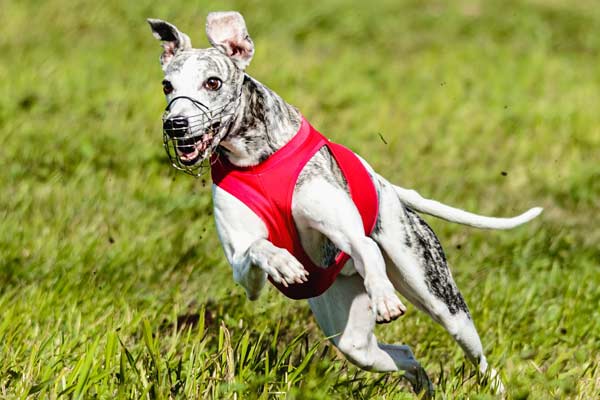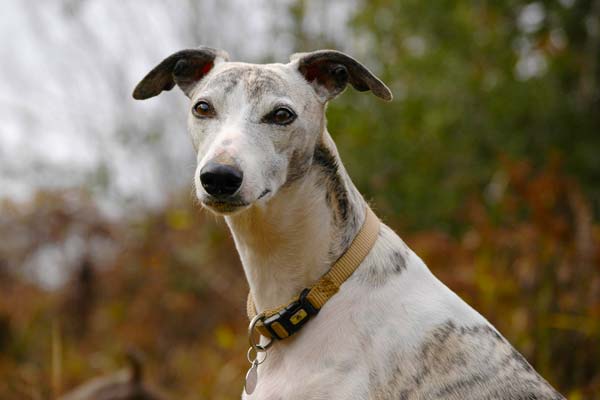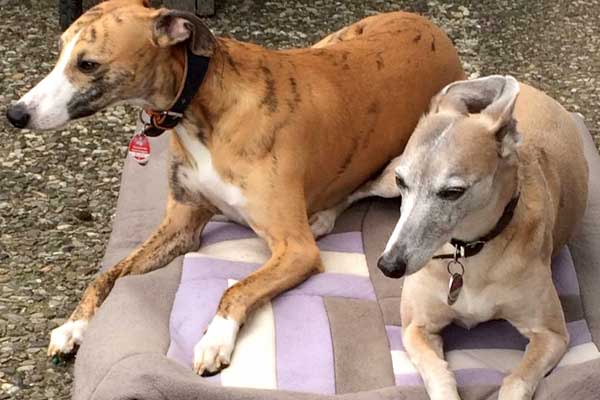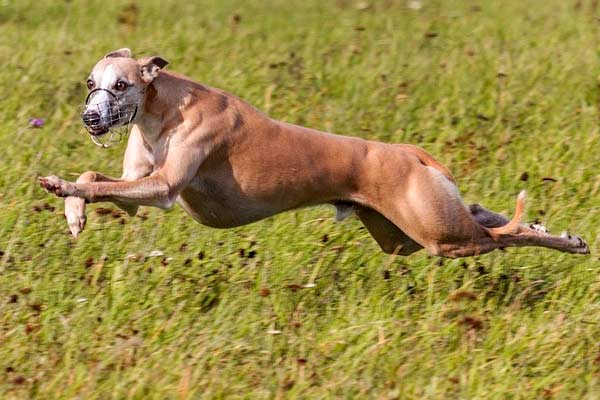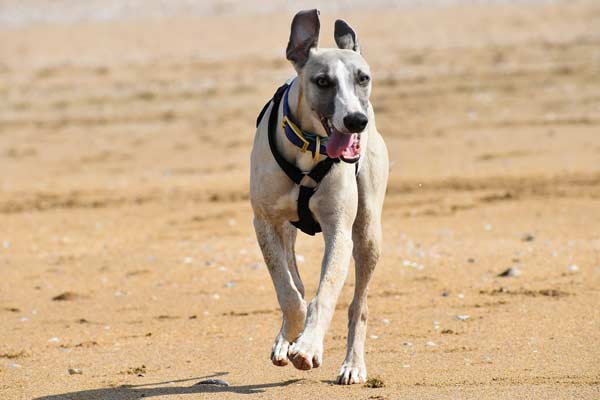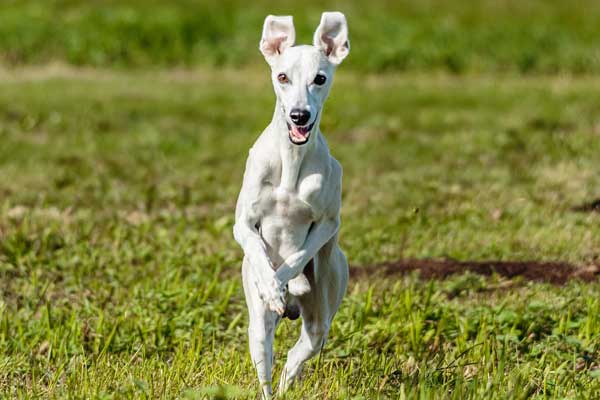Whippet Lurcher: A Loveable and Adaptable Companion!
This post will look at the Whippet Lurcher, a hybrid breed of sighthound and terrier. This medium-sized dog cross between two distinct breeds, each with its unique characteristics, but when combined, they produce a brilliant and friendly pet.
We’ll discuss the average size and weight range of the Whippet Lurcher, as well as the pros and cons of owning one.
We’ll also provide a few tips on properly caring for this dog. Read on to learn more about the Whippet Lurcher!
Explore the History of the Whippet Lurcher
Whippets were first bred in England in the 19th century as working dogs for farmers and gamekeepers. They worked alongside their owners to catch rabbits and other small animals, making them extremely popular with locals.
Around this time, people began mixing whippets with greyhounds to create a more powerful hunting dog.
The result was the whippet lurcher – a speedy and agile breed that could cover much larger distances than any individual purebred ever could.
As such, these dogs quickly became a favorite among poachers, who used them for hunting deer on land that wasn’t theirs.
Fortunately, however, these dogs have been domesticated over time and are now owned by families worldwide as beloved pets.
The Whippet Lurcher – A Loyal and Loving Companion Dog
If you are looking for a loyal, loving companion dog, the Whippet Lurcher is worth considering. While their size may be deceiving at first glance, these dogs have huge personalities and hearts.
Let’s look at the temperament of this breed and why they make such great companions.
Whippets Lurchers stand between 18 and 22 inches tall at the shoulder and can weigh between 18 and 48 pounds.
Personality Traits
Whippet Lurchers have an independent yet loyal personalities. They are adaptable to change and can easily adjust to new environments. They are also affectionate, gentle, and very tolerant of children.
They usually respond well to training because of their intelligence and willingness to please their owners. It’s important to note that these dogs do best when given plenty of exercises, as they need it to stay physically and mentally healthy.
Socialization Requirements
Whippet Lurchers need early socialization to become well-rounded adults who can handle different situations without getting overwhelmed or aggressive.
Introducing them to other people and animals while they are still puppies will help them grow into relaxed and friendly adults who enjoy being around others. Socializing your pup will also help prevent any potential behavior issues from developing as they get older.
Understanding Whippet Lurcher Health Concerns
Common Health Issues for Whippet Lurchers
Like all breeds, Whippet Lurchers can suffer from various hereditary conditions, including hip dysplasia, epilepsy, and eye disorders such as cataracts or glaucoma.
It is essential to check your dog regularly with a qualified veterinarian to catch any potential issues early on.
Vaccinations
You should ensure that your dog is up-to-date with all his vaccinations at least once a year to protect him from contagious illnesses and infections such as parvovirus or distemper, which could be fatal if not treated quickly enough.
Vaccines also help protect against rabies, a severe disease that affects humans and animals alike. Make sure to follow all instructions given by your vet regarding vaccinations for your pup’s health and safety.
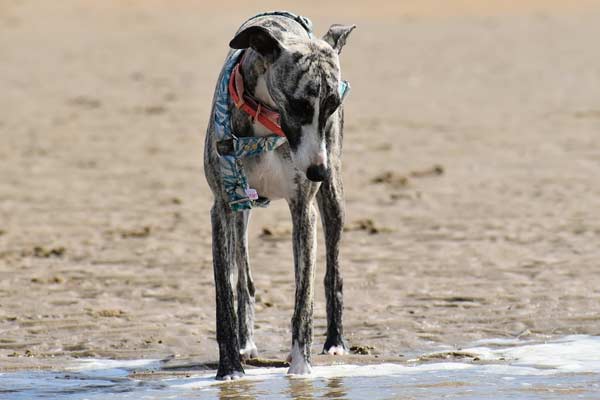
The Whippet Lurcher: Exercise and Training Tips for Owners
Exercise Requirements for Whippet Lurchers
Whippet lurchers need regular physical and mental stimulation to stay healthy and well-behaved. Experts recommend at least an hour of exercise daily, broken down into two or three daily sessions, including:
- Walking on a leash.
- Playing fetch in an enclosed area like a backyard or park.
- Taking trips to off-leash dog parks where they can run freely with other dogs.
It’s essential to remember that whippet lurchers are very active by nature, so they may need more exercise than other breeds if they become too restless or hyperactive.
Training Requirements for Whippet Lurchers
Training is another crucial component in raising a well-adjusted whippet lurcher. Positive reinforcement techniques work best because these dogs tend to be sensitive and may respond negatively to harsh punishments.
Start with the basic commands like “sit,” “stay,” and “come” as soon as possible so that you can gain control over their behavior when out in public or around other animals.
Also, focus on socializing your pup from an early age by introducing them to new people and places whenever possible so they will be comfortable interacting with others later on in life.
Grooming Tips for Whippet Lurchers
Brushing and Combining
Whippet Lurchers have short hair, so they don’t require daily brushing as long-haired breeds. However, it is essential to brush your Whippet Lurcher at least once a week to remove any dirt or debris from its coat.
It’s a good idea to use a comb on your dog’s Fur every couple of weeks to ensure that no tangles or mats form in their Fur. Use a soft brush that won’t irritate your dog’s skin and gentle strokes when brushing and combing your pet.
Bathing
Whippet Lurchers should be bathed every four to six weeks with a mild shampoo specifically designed for dogs with sensitive skin. Avoid using human shampoo, as this can strip the natural oils from your pet’s coat and cause irritation and discomfort. When bathing your Whippet Lurcher, ensure you thoroughly rinse all of the soap to avoid any skin problems that could arise from residue buildup.
Trimming Nails and Cleaning Ears
It would help if you trimmed your Whippet Lurcher’s nails regularly, as overgrown nails can cause pain and discomfort for the animal.
You can either take them to a professional groomer or do this yourself if you feel comfortable doing so; however, if you choose the latter option, be sure to use nail clippers specifically designed for dogs, as they will be the most effective and safest option available.
Regularly cleaning your dog’s ears helps prevent infection caused by bacteria buildup, which can lead to hearing loss if left unchecked.
Understanding Common Behaviors in Whippet Lurchers
Friendliness Towards People
Whippet Lurchers tend to be friendly and love attention from people they know. They may seem aloof around strangers, but they will warm up quickly if properly trained and socialized early on.
Though they are generally calm dogs, they need regular exercise and mental stimulation to prevent boredom-related behavior issues such as chewing or digging.
Tendency To Bark
Like most breeds, Whippet Lurchers can bark when threatened or out of excitement during playtime.
However, this breed tends to be less vocal than other hounds and can even become quiet when given enough attention and exercise throughout the day.
Regular training sessions can also help minimize barking behaviors by teaching your proper pup commands and providing them with something else to focus on instead of barking when excited or anxious.
What to Feed Your Whippet Lurcher
Nutrition Basics for Whippet Lurchers
Whippet lurchers have an average life span of 12-14 years. They are medium-sized dogs with moderately high activity levels, which means they need food high in protein, fat, vitamins, and minerals to keep up with their active lifestyle.
It’s important to note that whippets tend to be picky eaters and may not readily take to a new diet, so it’s essential to find something they like as soon as possible.
Feeding Whippets Lurchers
When selecting food for your whippet lurcher, look for foods specifically labeled “large breed dog food” or “active dog food.”
These foods will provide the necessary protein and fat content while providing essential nutrients like omega fatty acids, antioxidants, glucosamine sulfate, chondroitin sulfate, and other essential vitamins and minerals.
For an extra energy boost throughout the day, you can add wet or canned dog food to their diet. Wet food is higher in fat content than dry kibble, so it’s essential to monitor your pup’s calorie intake when adding wet food to their diet.
Additionally, always supplement meals with fresh water, as water intake is crucial for all active breeds like the whippet lurcher!
How Much Should You Feed Your Whippet Lurcher?
The amount of food you should feed your whippet lurcher depends mainly on their age, size, activity level, and health condition, so you should provide them 2-3 cups of dry kibble per day split into two meals plus 1/2 cup of canned wet food per meal if desired.
Remember that this amount could change depending on individual factors such as age/size/activity level, but if you need clarification on how much or what type of food your pup needs, consulting with a veterinarian is always the best option!
Pros & Cons of Owning A Whippet Lurcher
Pros:
Friendly: With their outgoing personalities, Whippet Lurchers make great family pets. They are extremely friendly with people and other animals, so that they will fit right into most households.
High Energy Level: The combination of sighthound and terrier genes gives the Whippet Lurcher an incredible amount of energy. They should take regular walks or runs to stay healthy and happy.
Low Maintenance Grooming Needs: Unlike many other breeds, the Whippet Lurcher does not require extensive grooming maintenance. Regular brushing will suffice to keep them looking their best.
Adaptable: The Whippet Lurcher responds well to training and can quickly adapt to different environments. Whether it’s an apartment or a house with a large yard, these dogs can fit into most living situations without problems.
Cons
Health Problems: Because they are hybrids, some health problems can arise with Whippet Lurchers due to inbreeding. It’s important to research potential health issues before purchasing one of these dogs to address any potential problems early on.
High Prey Drive: As sighthounds, the Whippet Lurcher has an incredibly high prey drive which makes them prone to chasing smaller animals like cats or rabbits if they get loose outside or off leash in public areas. Training is essential to managing this behavior to protect your pet from harm.
Shedding Fur Everywhere: While their short coats don’t require much grooming upkeep, they shed pretty frequently and can leave Fur all over your furniture and clothing if not groomed regularly enough!
Conclusion
Overall, Whippet Lurchers make great family pets due to their friendly personalities and adaptability. They need regular walks or runs to stay healthy and happy, as well as essential grooming maintenance.
However, it is essential to be aware of potential health problems that can arise from breeding and ensure proper training to keep them safe. With the appropriate care, they can bring a lot of joy into your life!
